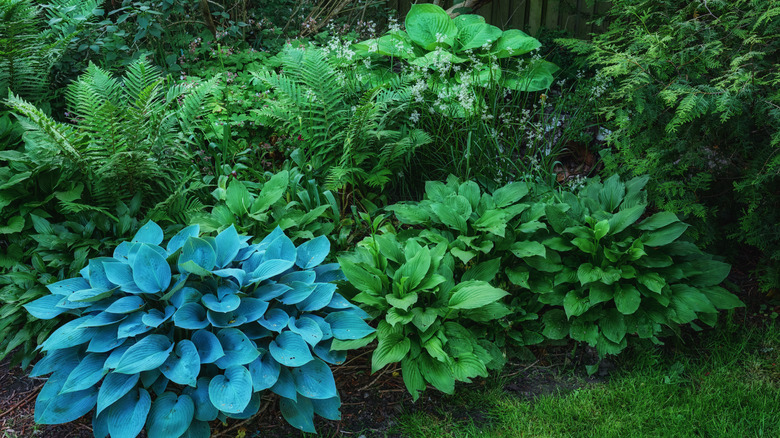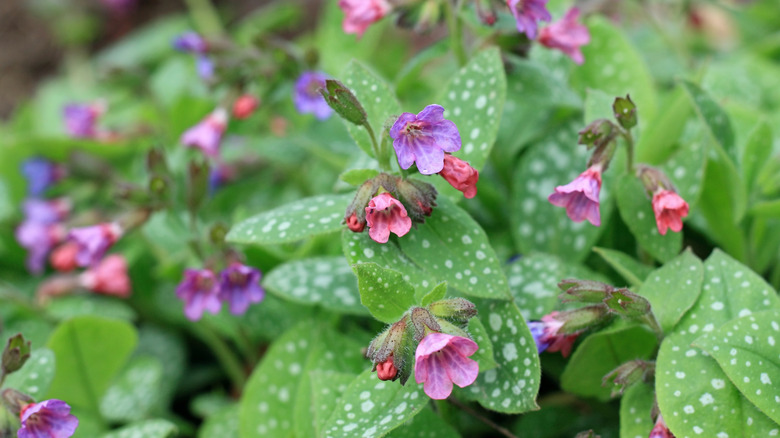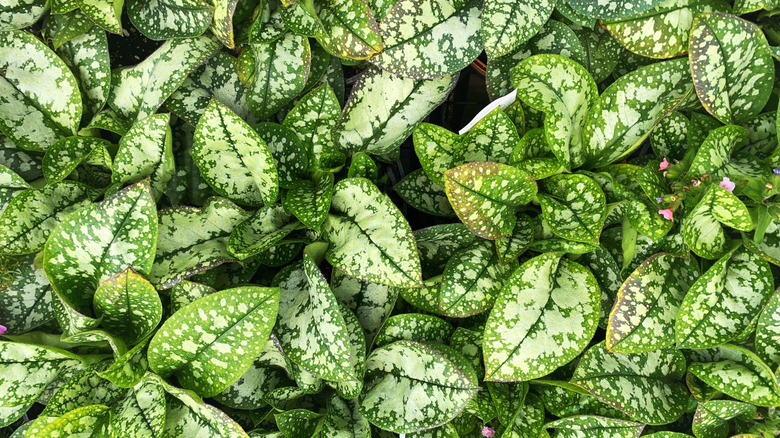The Perennial Flower You Should Be Growing Next To Hostas
Hostas are a summer mainstay, decorating flowerbeds with large, lush leaves, and thriving in partial sun or shade. It's no wonder these plants are a favorite among expert and amateur gardeners alike. Apart from stunning ground covers that grow perfectly with hostas, there's also a vibrant, perennial flowering plant you might want to add as well.
Enter, the lungwort (Pulmonaria longifolia). Despite its strange name, this plant features beautiful flowers that change from pink to violet to blue in the spring, and it will come back year after year, working great as a bordering plant or groundcover. It's ideal as a companion to hostas because it too requires little maintenance but its blooming season comes right as hostas come to life following the long winter.
Lungwort does well in USDA Hardiness Zones 3 to 8, and unlike hostas, it's resistant to both rabbits and deer. Lungwort and hostas enjoy the same type of soil, the same mix of sun and shade, and a similar Zone range, making them perfect companions for one another. Paired up, they create an interesting and dynamic garden landscape.
How to plant this spring-blooming perennial
Lungwort blooms in early spring, just as the last frost disappears and a milder season beckons. Its flowers last throughout the spring months and into early summer. If you want to grow your own lungwort plants, it's best to plant them in your beds in late fall. This way, your plants will have had time to take root, establish themselves, and bloom, come their first spring.
Of course, nurseries are often selling lungworts in the spring when their flowers are at their best. If you purchase them during this time, you can also plant them in your garden then. Like hostas, these plants prefer a rich soil that drains well. While they can withstand sunlight in the mornings, they prefer an area with a good amount of shade in the afternoons.
Lungwort does well in clusters and will expand like hostas, year over year. It requires sufficient watering in order to bloom, especially during periods of dry weather. As the blooms die, you can trim the stems back to encourage new growth throughout the warmer season. While both lungworts and hostas are hardy, ideal conditions will always lead to best results, so try supplementing the soil with organic matter or compost.
Caring for lungworts
Come mid summer, your lungwort's blooms will die off, but its big green leaves dotted with silvery and light green specks, will remain green and healthy well into fall. If you find that your plant starts to look a little tired in mid-summer, don't be afraid to cut the foliage right back to encourage fresh new growth. Over time, these plans can reach between 9 to 18 inches in height and spread up to 3 feet wide.
If you're looking to add more lungwort throughout your beds, late summer or early fall is the best time to dig your plants up, divide them and replant them. This is often not necessary, unless the plants start to spread too far. Remember that your hostas will be thriving throughout the summer, so the best time to divide and replant them is in the early spring, as the leaves begin to unfurl.
As you look for new places to plant your lungwort, consider pairing it with other beautiful flowers that grow perfectly in shade. With proper care, this silver-speckled ground cover will add stunning flowers to a shady yard and become a perfect companion to your hostas.


